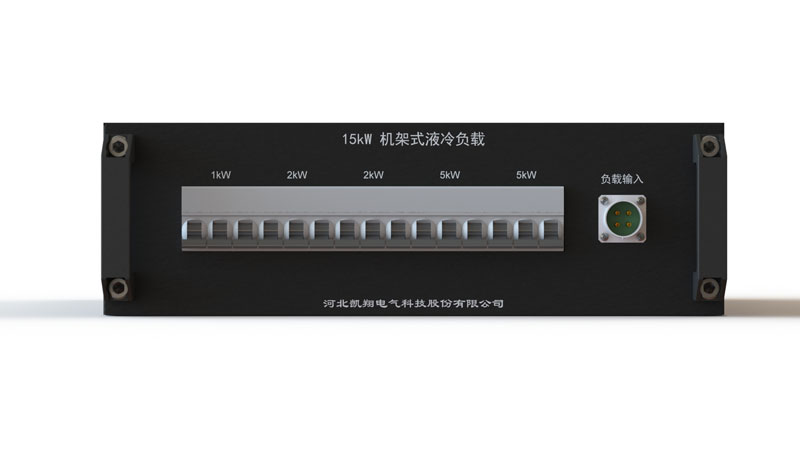What are the applications of Liquid Cooling Load Bank?
Time:2025-05-19
Application Fields of Liquid Cooling Load Bank
(1) Data Centers
As the core places for big data storage, computing, and processing, data centers have a large number of server devices. These servers generate a huge amount of heat during operation. The application of the liquid cooling load bank in data centers, on the one hand, can efficiently dissipate heat from servers, ensure the stable operation of servers under high loads, and improve the speed and accuracy of data processing; on the other hand, it can significantly reduce the energy consumption of data centers and lower operating costs. Cloud computing giants such as Google, Microsoft, Alibaba, and Tencent are actively promoting the adoption of liquid cooling heat dissipation technology in data centers to enhance the overall performance and energy efficiency of data centers.
(2) New Energy Field
Electric Vehicle Charging Stations: With the popularization of electric vehicles, the requirements for the performance and stability of charging stations are increasingly high. The Liquid Cooling Load Bank can conduct comprehensive load tests on charging equipment, simulate load conditions in different charging scenarios, ensure the stable output performance and safety of charging equipment, effectively improve charging efficiency, and guarantee the fast and stable charging of electric vehicles.
New Energy Power Generation: In the fields of new energy power generation such as wind power generation and photovoltaic power generation, power generation equipment is greatly affected by environmental factors, and it is necessary to ensure the stable operation of the equipment in various complex environments. The Liquid Cooling Load Bank can be used for the testing and debugging of new energy power generation equipment, detect the performance of the equipment under different working conditions, discover potential problems in advance and solve them, and improve the reliability and power generation efficiency of power generation equipment.
(3) Electric Power Industry
Power Generation Equipment: During the operation of various power generation equipment such as thermal power generation, hydropower generation, and nuclear power generation, some components will generate a large amount of heat due to high-load operation. The liquid cooling load bank can conduct load tests and heat dissipation management on power generation equipment, ensure the stable performance of power generation equipment during long-term operation, reduce equipment failures, and improve power generation efficiency and the stability of power supply.
Substations: Substations undertake important tasks such as voltage transformation and power distribution. There are many devices in the station, and the heat generation is large. The Liquid Cooling Load Bank can be applied to the heat dissipation of substation equipment, effectively reduce the equipment temperature, ensure the safe and stable operation of substations, and reduce equipment failures and power outages caused by overheating.
(4) Research Institutes and Universities
In the laboratories of scientific research institutions and universities, many experimental devices and high-performance computing equipment have extremely high requirements for heat dissipation. The liquid cooling load bank can provide stable and efficient heat dissipation guarantees for these devices, ensure the accuracy of experimental data and the stable operation of the equipment, and assist researchers in carrying out various cutting-edge scientific research and complex computing tasks.
(5) Communication Facilities
Communication facilities such as communication base stations and data transmission equipment generate continuous heat during operation. Especially for 5G communication base stations, their power density is much higher than that of traditional base stations, and the heat dissipation demand is more urgent. The liquid cooling load bank can conduct heat dissipation treatment on communication facilities, ensure the stable transmission of communication signals, reduce signal interruptions and communication failures caused by overheating of equipment, and improve the reliability and coverage of the communication network.
(6) Military Equipment and Aerospace
Military equipment and aerospace equipment face extremely complex environments and high-load working conditions during operation, with almost stringent requirements for equipment reliability and stability. The liquid cooling load bank, with its characteristics of high-efficiency heat dissipation, stability, and reliability, can provide reliable heat dissipation solutions for military equipment and aerospace equipment, ensure the normal operation of equipment in harsh environments, and guarantee national defense security and the smooth implementation of aerospace missions. For example, in fighter jets, satellites, and other equipment, the liquid cooling load bank can effectively dissipate heat from electronic equipment and maintain stable equipment performance.
(7) Industrial Enterprises
In industrial production, many large mechanical equipment, automated production lines, and industrial control systems generate a large amount of heat during operation. The liquid cooling load bank can be applied to the heat dissipation of these industrial equipment, ensure the continuous and stable operation of the equipment, reduce equipment downtime for maintenance, and improve industrial production efficiency and product quality. The advantages of the liquid cooling load bank are particularly obvious in high-temperature and high-load industrial scenarios such as steel smelting and chemical production.
(8) Rail Transit
In the field of rail transit, such as the traction system, braking system, and communication signal system of high-speed railways and subways, generate a large amount of heat during operation. The liquid cooling load bank can conduct heat dissipation management on these devices, ensure the stability and reliability of the equipment during high-speed operation and long-term work, and guarantee the safe and efficient operation of rail transit.
In conclusion, the liquid cooling load bank including data centers, new energy, electric power, scientific research, communication, industry, and rail transit. With the continuous progress and improvement of technology, the liquid cooling load bank is expected to be further promoted and applied in more fields, providing strong support for the development of various industries and driving the industry towards the direction of high efficiency, energy conservation, and greenness.
News Recommendation
-
 2024-09-11
2024-09-11TRIUMPH LOAD EXHIBITING AT Enlit Europe 2024 -BOOTH 7.H08
-
 2023-04-21
2023-04-21TRIUMPH LOAD EXHIBITING AT DATA CENTER WORLD GERMANY 2023-BOOTH F909
-
 2023-04-06
2023-04-06TRIUMPH LOAD EXHIBITING AT ELECTRIC POWER TECH KOREA 2023 – Booth G109
-
 2022-05-05
2022-05-05What is the role of ac load bank for power supply?
-
 2022-05-05
2022-05-05What is the role of the load bank?


